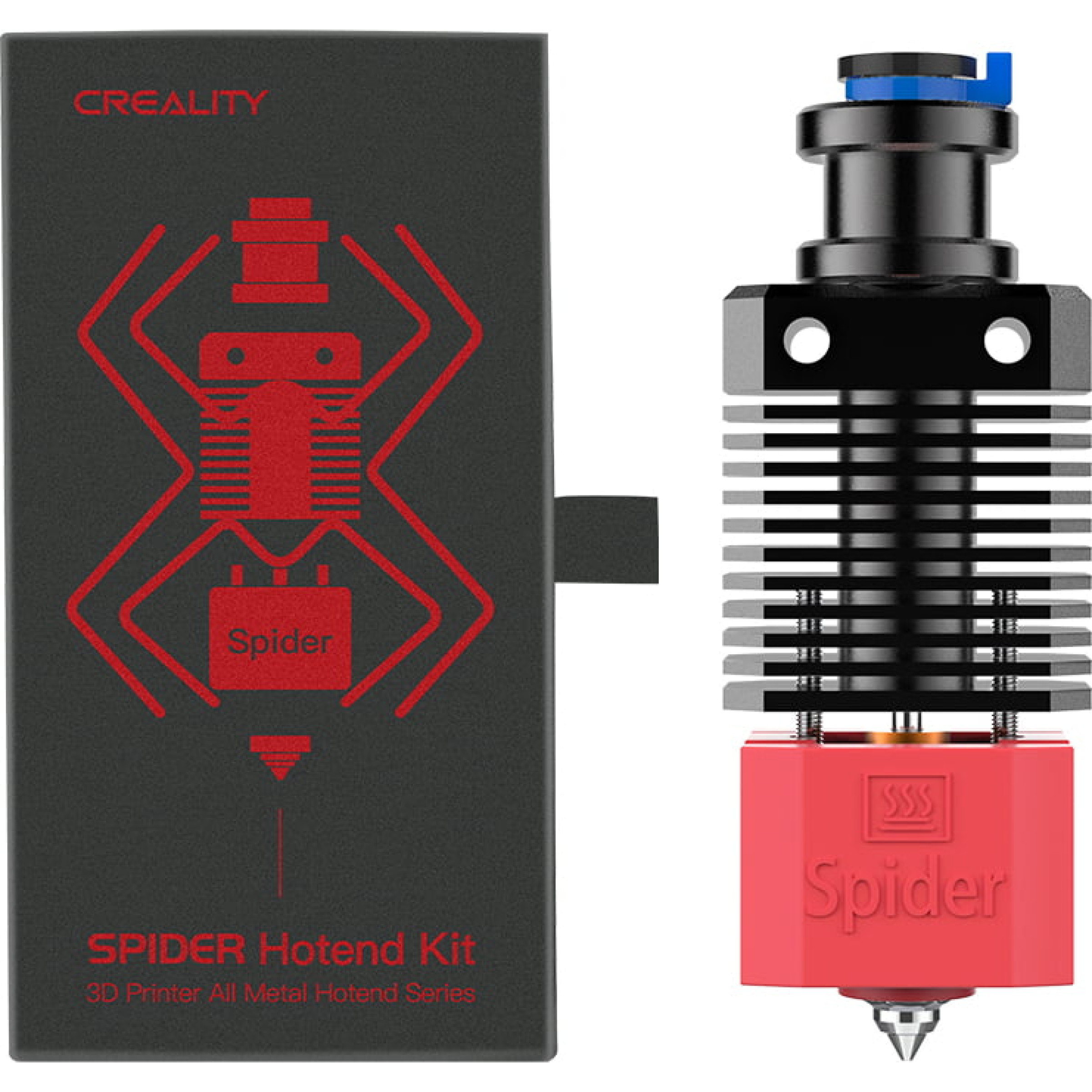Table of Contents
2023-11-03 - switching to full-metal hotend
recently i was doing a lot of PET-G printing, at 250 deg.C. since it was on a short notice, i needed to print it during the day, while sitting and working in the very same room. while we'll all die one day, i'd prefer it was not PTFE-fumes-induced-cancer. after some preps and research, i've decided to switch to full-metal hotend, so that no PTFE will be anywhere near (too) hot elements. my choice was creality hotend.
for PET-G it worked great, pretty much out of the box. issues started with lower temperature filaments, like PLA and Silk. especially PLA was notoriously jamming (note: jamming – not clogging!) hotend. i'll spare you quite a bit of reading of trial-and-(mostly)-error phase and instead distill down it all to key takeaways.
problem statement
1st of all – i was not dealing with clogging here. clogging is when filament obstructs nozzle's opening (you know – the 0.4mm part ;)). usual reason is: dirt, dust or PTFE getting there. jamming is when filament gets stuck somewhere before. this is a common thing for PLA + full-metal hotends combination and this turned out the be what caused my headaches, too.
winning combo
in order to combat it, i did the following: - designed improved radiator cooling, to ensure cold-end of the hot-end stays cool at all times - used thermal-conducting paste between heat-break and radiator (note that such paste should never be used between heat-break and heating element!) - slightly tightened extruder's gear to filament - added 2 drops of vegetable oil into the hotend (from the top)
i'd like to put a special emphasis on the very last step. i realize if you're new to this concept, it does sound like a joke. i can assure you it is not! more over – i think this was the biggest contributor to solving my problems! yet since it was a 1-way route (you cannot just “undo” oiling!), it was the very last step i took.
when oiling make sure to use natural, vegetable oil, not mineral oil as mineral oil is reported to negatively affect print strength of your parts. also make sure this is an oil suitable for frying as it will be at 250+ deg.C when hotend is heated. for more details check out this video explaining in detail how to oil internal of your hotend, to make sure you get a desired effect.
after applying these changes, i'm happy to report days worth of printing time w/o a single jam. compared to previous “jam every 15 minutes”, that's a huge thing.
final notes
for the record – before doing most of the above, i was experimenting with retraction. this is often suggested way to fix jamming, as “retracting” means pulling hot, melted filament into the sticky upper part of the hotend, with not PTFE to ensure it does not stick to the walls. however my printer has a Bowden extruder, end reducing retraction to 1-2mm (that was the top i could afford before having regular jams) caused too much oozing and thus stringing, effectively decreasing print quality and increasing post-processing time. while i'm now back to previous retraction settings, i did new to shorten it significantly when doing waterproof prints, where large retractions caused objects to leak.
i consider jamming problem to be now solved. my 3D printing SDK has been adjusted with all the required changes, too. as of writing these words, SDK's changes are not yet released, yet are available on master branch already.
creality spider's hotend mounting and cooling is available as well. note that the design uses threaded inserts for screws. this makes assembly, fixes and changes a breeze!
oh – and btw. when you change anything around hotend or heatbed, make sure to tune PID settings of the corresponding element.
overall impressions
it took me a lot of time to adapt my printer and processes to the full-metal hotend change. however i'm pleased with the overall results – no more PTFE fumes! you really can tell the difference! print quality is subjectively slightly better, too.
once you know how to adapt to a new setup, i think it's a change worth contemplating.
wrt my particular choice of hotend, there's one problem i have not noticed before buying. nozzles are in odd size and are only made by creality. while these are made from hardened steel, i'd expect them to last for a very long time. however these are 10-20x more expensive, compared to classic brass nozzles i have plenty of in my closet.

